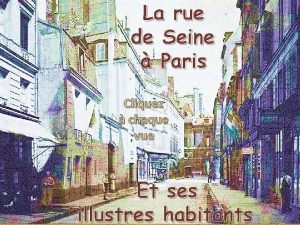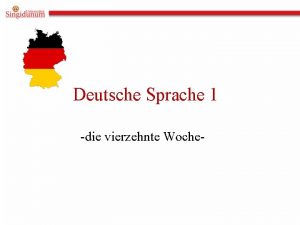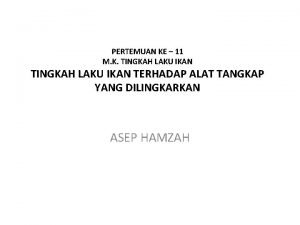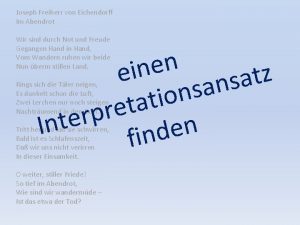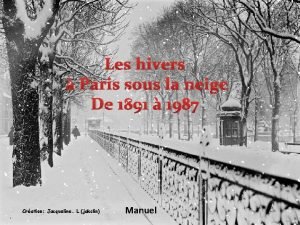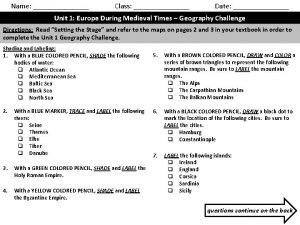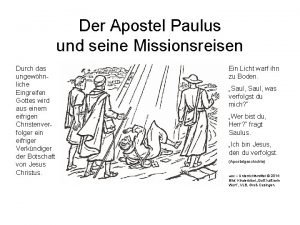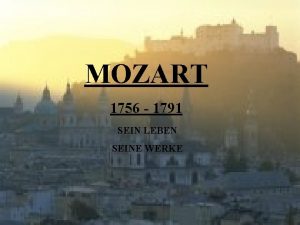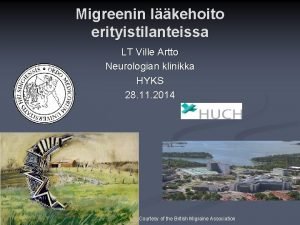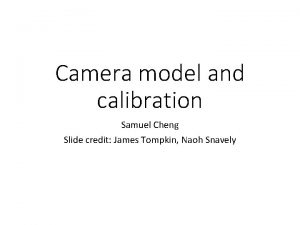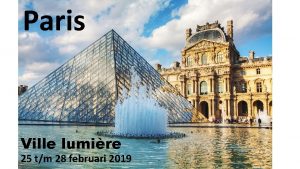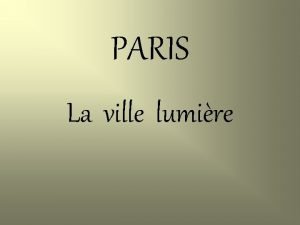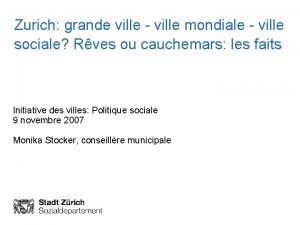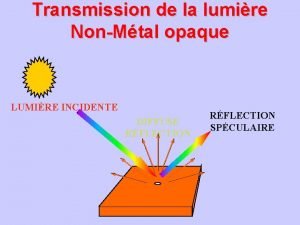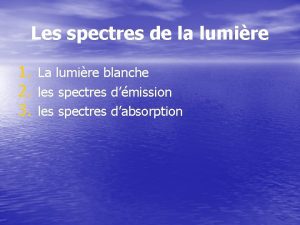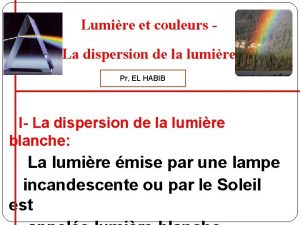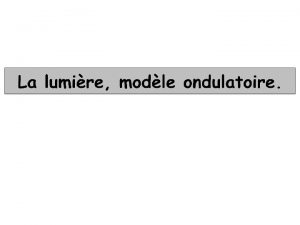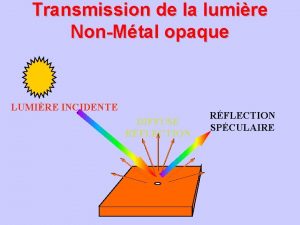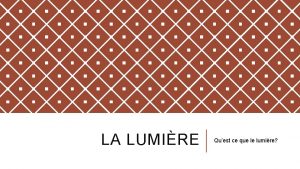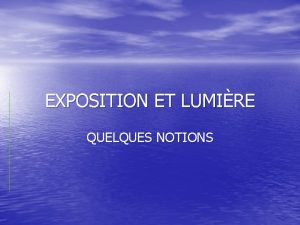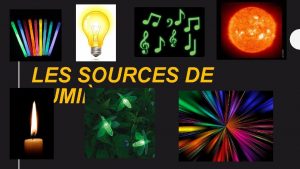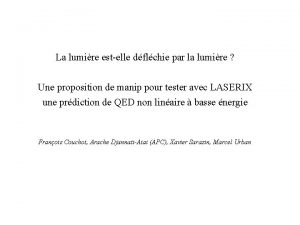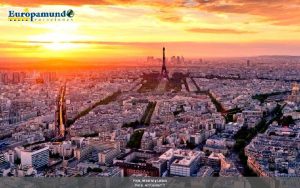Paris La Ville Lumire La Seine The Seine



















- Slides: 19

Paris La Ville Lumière

La Seine • The Seine is the river that flows through Paris. • It divides Paris into two parts. The upper side is known as the right bank and the lower side is known as the left bank. • There are many boat tours of the Seine; one is called a Bateau Mouche.

Les Arrondissements • Paris is also divided into small sections, or arrondissements. There are 20 of them. • The number of the arrondissement is printed on the street signs in that area. Street signs are attached on the corners of buildings.

Les Arrondissements

Public Transportation • In Paris, you can take le métro, le bus, or un taxi. • Many people also choose to ride bikes or mopeds rather than to drive a car in the city. • A month-long bus/subway pass is called a carte orange.

Communications • Many people in France rely on cell phones for communication. • If you need to use a pay phone you cannot insert coins. A special card, called a telecarte must be purchased. • Telecartes may be purchased at a Tabac. • Also at a Tabac, one can buy stamps, lotto tickets, tobacco products, drinks, etc.

La Tour Eiffel • The Eiffel Tower was built in 1889 for the centennial celebration and world fair. • It was built to demonstrate the ability to build such a structure and was supposed to be torn down. • It was saved because it functioned as a radio tower. • Now it is one of the most well-known monuments in the world.

Notre Dame • Notre Dame is a cathedral in Paris. • Notre Dame is an example of Gothic Architecture. • Construction began in the 1100’s and didn’t finish until nearly 200 years later.

Gothic Architecture • Pointed Arches • Spires • Flying Buttresses • Stained Glass

Arc de Triomphe • The Arc de Triomphe was built to commemorate Napoleon’s war victories. • Underneath the arc is the tomb of the unknown soldier. • The Arc stands in the Étoile on the Champs-Elysées, and is in a direct path of the Louvre, Place de la Concorde, and La Défense.

Arc de Triomphe

Le Louvre • The Louvre once served as home to the Kings and Queens of France, until they moved to Versailles. • It is now a world-famous art museum. • Famous works such as the Mona Lisa, Venus de Milo, and Winged-Victory are housed here. • It is now characterized by a large glass pyramid that serves as an entrance to the museum.

Le Louvre

Le Musée d’Orsay • The Musée D’Orsay once served as a train station in Paris. • It is now an art museum that houses mostly impressionist and postimpressionist pieces. • It is here where you will see the works of Monet, Renoir, Degas, Van Gogh, and Cézanne.

Le Musée D’Orsay

Other Monuments • Centre Pompidou- Modern art museum, built to look inside-out. • Place de la Concorde- area where the guillotine stood during the revolutionnow is an Egyptian Obelisk. • Les Invalides- Military museum and tomb of Napoleon.



 Rue de seine paris
Rue de seine paris Paris ville mondiale bac pro
Paris ville mondiale bac pro Hananel purse
Hananel purse Meine deine seine ihre
Meine deine seine ihre Tingkah laku ikan terhadap alat tangkap purse seine
Tingkah laku ikan terhadap alat tangkap purse seine Eichendorff im abendrot
Eichendorff im abendrot Possessivartikel übungen schubert
Possessivartikel übungen schubert Seine gelée 1987
Seine gelée 1987 Eure madrie seine foot
Eure madrie seine foot Sprüche eltern ehren
Sprüche eltern ehren Label the seine thames elbe tiber and danube rivers
Label the seine thames elbe tiber and danube rivers Herbert köhler gesees
Herbert köhler gesees Das gehirn und seine wirklichkeit
Das gehirn und seine wirklichkeit Ein geschäftsmann sendet ein fax an seine frau
Ein geschäftsmann sendet ein fax an seine frau Missionsreisen paulus
Missionsreisen paulus Wo verbrachte mozart seine kindheit
Wo verbrachte mozart seine kindheit Ville hanni
Ville hanni Kuukautismigreeni
Kuukautismigreeni Hôtel de ville
Hôtel de ville Learning ville
Learning ville
